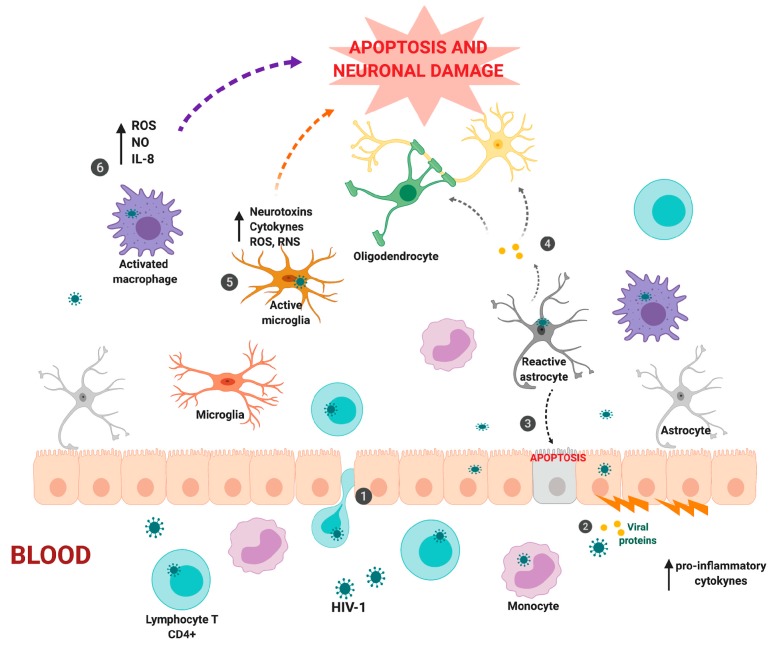Figure 1.
Entry of human immunodeficiency virus (HIV)-1 into the central nervous system and its effects on cells that lead to damage and death of neurons. (1) HIV-1 can enter through monocytes or infected T cells that migrate from the bloodstream to the central nervous system (CNS) (Trojan horse theory). (2) The increase in pro-inflammatory cytokines and viral proteins can alter the permeability of the epithelial cells of the blood–brain barrier, making virus entry easier. In addition, the virus can use infected epithelial cells and reach the other side through transcytosis. (3) Reactive astrocytes can induce epithelial cell apoptosis, contributing to the modification of the permeability of the blood–brain barrier through the release of viral proteins such as Tat. (4) The viral protein Tat has a direct effect on oligodendrocytes and neurons, which produce increased damage and neuronal death. Chronic activation of activated (5) microglia and (6) macrophages generates an increase in the levels of proinflammatory cytokines, neurotoxins, reactive oxygen species (ROS), and reactive nitrogen species (RNS) (created with BioRender).

